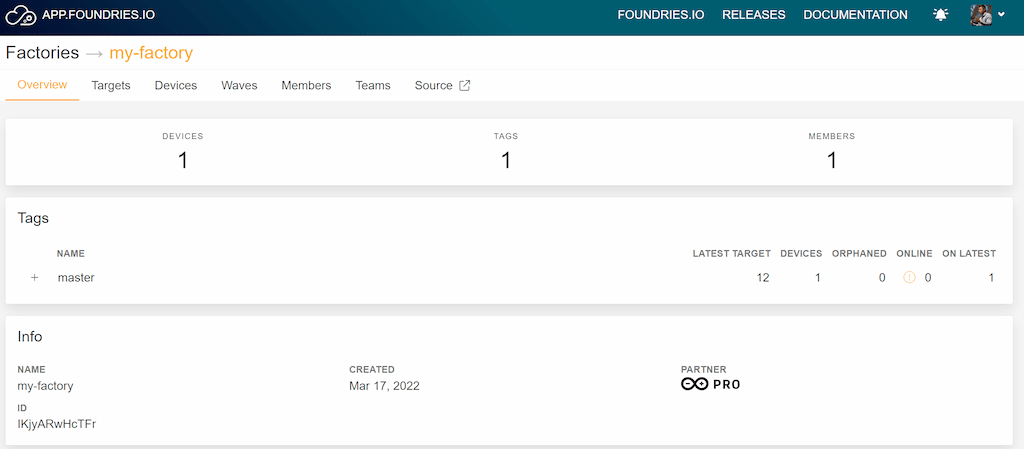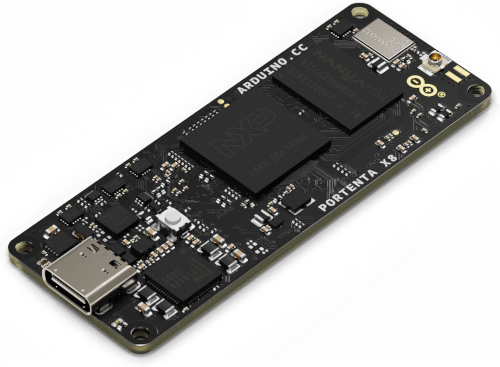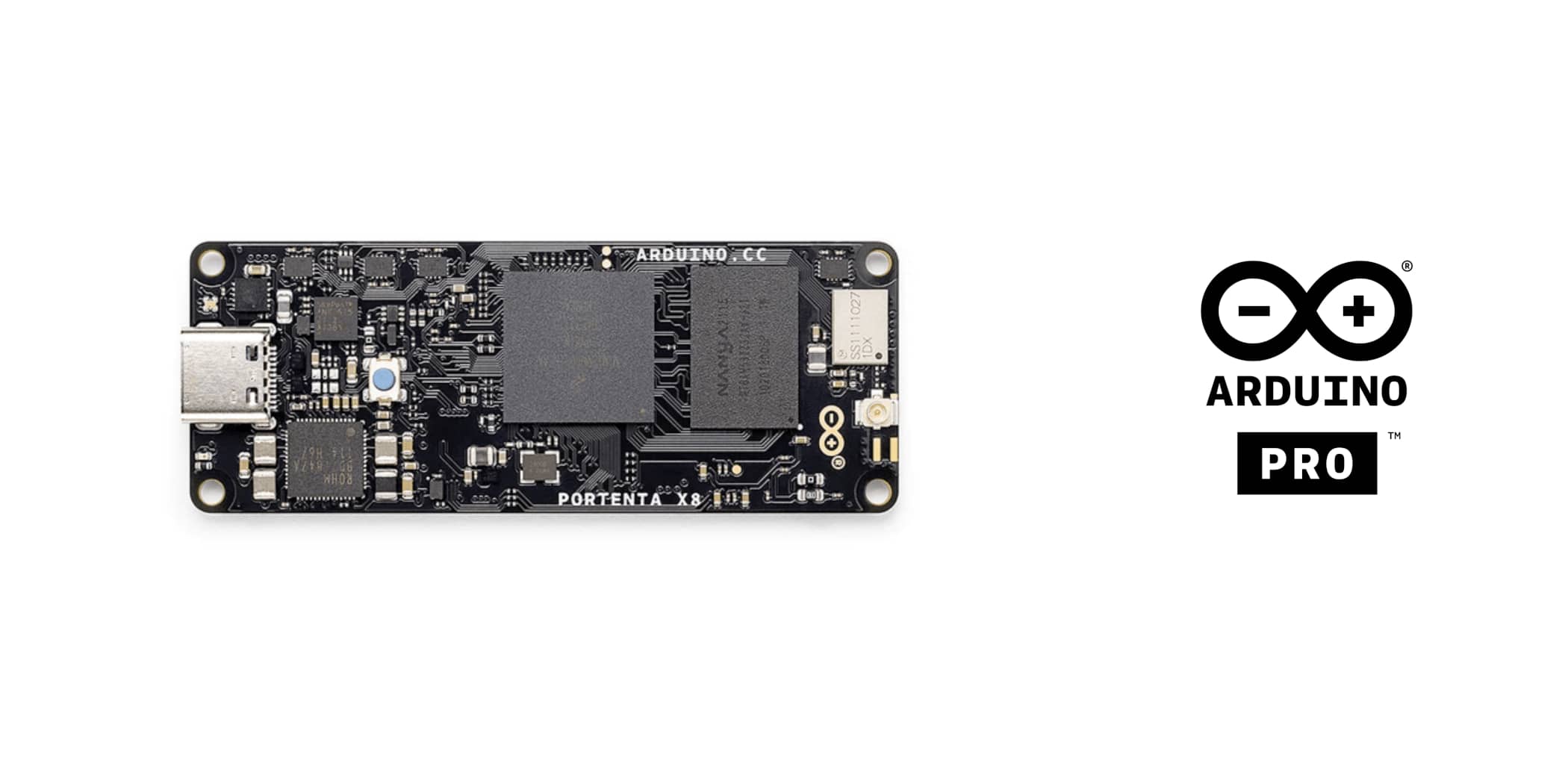Years in the future, the electronics industry may look back on March 24, 2022 as a pivotal moment in the history of embedded Linux-based IoT device development, the day that suddenly it became much easier to build, test, deploy and maintain secure and updatable edge products.
On that day, during a brief presentation streamed live on YouTube, Facebook and LinkedIn, executives from Arduino, Arm, NXP Semiconductors and Foundries.io got together to announce the arrival of the Arduino Pro Portenta X8 industrial grade System on Module (SoM). This is the first member of the Arduino Pro family of boards that enables developers to harness the power of an advanced processor running Linux in their IoT and edge applications.
In the unlikely event you haven't heard of them, Arduino, founded near Turin in the Piedmont region of Italy, is the world’s leading open-source hardware and software company. Their founder’s mission was to provide an easy-to-use hardware platform for anyone creating interactive electronic projects. These first Arduino products were rapidly adopted by a growing community of students, educators and makers, and, as a result, the company adapted by branching out into products for IoT, wearables, 3D printing and other embedded environments. As of today, the Arduino community has around 30 million active users. To expand beyond the world of makers and education, Arduino recently launched their Pro Business Unit. With Pro products Arduino caters to companies that are interested in going beyond the concept and rapid prototyping phase, who want to start mass production with off-the-shelf production grade hardware modules rated for use in industrial environments.
WIth one exception, the Yún, which we will cover shortly, to date Arduino’s products have all been built around resource constrained microcontrollers (MCUs). MCUs are at the heart of most IoT devices currently deployed, and today are often based on Arm’s Cortex-M class of CPU cores. MCUs are used in a wide variety of simple control and sensing applications, such as efficiently operating a motor in a smart door lock, or remotely monitoring door and window sensors. Due to their inherent processing and memory addressing limitations, MCUs aren’t typically able to run complex operating systems like Linux, and the powerful applications that are needed to truly transfer IoT workloads from the cloud to the network Edge. However, with the Portenta X8, Arduino has combined the ease of use of their MCU based platforms with the power of a microprocessor (MPU), to deliver true Edge processing capabilities. MPUs running Linux deliver processing performance akin to that of the similar application processors powering the smart phones we all have in our pockets.
As Fabio Violante, CEO at Arduino, describes, “A few years ago, with the legendary Yún, Arduino invented a new category of products by combining microcontrollers and microprocessors on a single hardware platform. Now, we are taking this experience to the next level by providing enterprises the same flexibility, with performance on steroids thanks to the Portenta X8 (4x Cortex®-A53, Cortex-M7 and 2x M4). Today, the world is different: You cannot think about a Linux-based device without anticipating the challenges of securing and maintaining it over time. This requires expertise, commitment and attention to every detail related to security and maintenance. For this reason, we decided to partner with Foundries.io to simplify this approach by providing a ready-to-use solution that can help our customers build systems with confidence. By embedding a FoundriesFactory in the Arduino platform, customers can be sure to choose the best solution on the market.”

The IoT market is expected to more than double in the next five years, and the market for Edge devices will nearly triple with accelerated growth expected in industrial IoT, Electric Vehicle (EV) infrastructure and robotics. Among the challenges to realizing this growth and innovation for businesses are the security of these devices and the complexity and expense associated with building and maintaining Linux to support them. Foundries.io, based in the UK, addresses these challenges with FoundriesFactory, a cloud-based DevOps service to build, test, deploy and maintain these devices. The Portenta X8 comes preloaded with the fit-for-purpose, customizable Linux microPlatform (LmP) OS, a plug-and-play platform capable of running device-independent software thanks to its modular container architecture. Onboard Wi-Fi and Bluetooth® connectivity provides the hardware capability needed for remote OS and application updates, to ensure the Linux platform software is always up to date and free from identified critical security vulnerabilities. Foundries.io’s Linux platform software is built using best industry practices for security and incremental Over The Air (OTA) updates, to enable developers to much more easily build their products to securely utilize the wireless connectivity capability. As a result, devices can be maintained over service lifetimes that might be 20 years or longer, all while lowering the engineering costs for device development and device management, and, importantly, reducing time to revenue.
George Grey, the CEO of Foundries.io, commented, "Foundries.io is in a unique position to advance Arduino's vision for enabling enterprises to more easily deploy and maintain Linux-based products for IoT and Edge applications. The combination of the Portenta X8 and the FoundriesFactory cloud solution will accelerate customer time to market, increase product security and enable rapid deployment and lifetime OTA management of customer devices and fleets, while giving freedom of choice for connectivity to public or private cloud services. From off-the-shelf to fully customized options, Arduino and FoundriesFactory are providing an industry leading solution for Linux-based IoT and Edge products.”
Out of the box, Arduino users will be able to access a FoundriesFactory for the Portenta X8 hardware platform. This will enable them to immediately connect Arduino Portenta X8-based products to the cloud and start developing container-based applications, leveraging the device management and DevOps capabilities available within FoundriesFactory.

The Potenta X8 multiprocessor platform features a total of 9* cores within a compact form factor of 2.6” x 1.0” (66.04 x 25.4 mm): In addition to the usual MCU (in this case STMicroelectronics’ dual-core STM32H747XI), for Linux Edge processing there is an MPU from NXP, the i.MX 8M Mini, with four Arm Cortex-A53 cores running at up to 1.8 GHz, plus an additional Cortex-M4 at up to 400MHz. NXP’s Jeff Steinheider, VP/GM of their Industrial Edge Processing Product Line, explained, “This is a powerful alignment that will result in tangible advances for embedded developers and enterprises across a variety of vertical industries. Built using the NXP i.MX 8M Mini applications processor as the first Arm® Cortex®-A core in the Arduino Pro ecosystem, this is the kind of strategic partnership that signals a new way of doing things is upon us, and we couldn’t be more excited to be a part of it.”.

The X8 includes an NXP SE050 hardware security element to provide key generation, accelerated crypto operations and secure storage, as a spokesperson from Arm explained, “Along with PSA Certification, the Portenta X8 has achieved Arm SystemReady certification and integrated Parsec services, making it one of the first Cassini Products or Cloud Native Edge devices available to developers in the market. One that enables the migration of cloud-native workloads from the Cloud to the edge, and contributes to a cloud-native developer experience across our diverse and secure IoT ecosystem. With the launch of its X8, Arduino is at the advent of the Edge transformation”
When combined with a carrier board, the Portenta X8 creates a powerful industrial computer to control equipment, collect and process data, or act as a multi-protocol gateway sending information to the Cloud. It could quickly enable smart AGVs to interface with cameras, lidar, motor wheels, batteries and so on – to remotely evaluate the most efficient trajectories to complete tasks around the factory, improving overall material flow. Portenta X8 could use environmental smart sensors to implement behavioral analytics that recognize and even prevent collisions and intrusions. Adding an HMI touchscreen, it becomes a smart dashboard to control any system or application remotely, collecting analytics on consumption at the same time. Smart tractors could use a Portenta X8-based navigation system to map crop fields and adjust direction to avoid duplicate fertilization, all while gathering data to improve efficiency in the future.
To enable these use cases, and further boost the utility of the Portenta ecosystem, Arduino Pro also released the Portenta Max Carrier board to make it effortless to add advanced features to any X8-based project. Compatible with the eNUC form factor, Portenta Max Carrier transforms Portenta modules into single-board computers or reference designs. With its dedicated high-density connectors it can be paired with Portenta X8, allowing developers to easily prototype and also deploy their applications. This industrial-grade carrier further augments Portenta wireless connectivity options with LoRa®, NB-IoT and more. It also includes support for Ethernet, USB-A, audio jacks, microSD, mini-PCIe, FD-CAN and Serial RS232/422/485. In addition to an external supply (of 6V to 36V), the Max Carrier can also be battery powered via an onboard 18650 Li-ion battery connector with 3.7V battery charger.
March 24th, 2022 will be remembered as the day that edge processing was truly democratized for the first time, by combining the simplicity of Arduino hardware with the ease of using the cloud-based DevOps platform from Foundries.io. Developers no longer need expertise in Linux, security, or cloud based device management to build powerful Edge devices. Until now leveraging the power of processors running Linux at the Edge was almost prohibitively difficult. Thanks to this four way collaboration combining intellectual property from Arm, silicon from NXP, boards from Arduino, and a Linux-based software platform from Foundries.io, IoT workloads will no longer be confined to the cloud, with the limitations and latencies that the cloud brings. Now anyone can deploy powerful edge processing capabilities to power their IoT workloads.
You will be able to get your hands on the Portenta X8 SoM for €199 or $239, and the Portenta Max Carrier will set you back €279 or $335. You’ll find ordering information and everything else you need to know here: https://www.arduino.cc/pro.
* In case you are counting, there are two additional CPU cores in the Wi-Fi + Bluetooth chipset.
